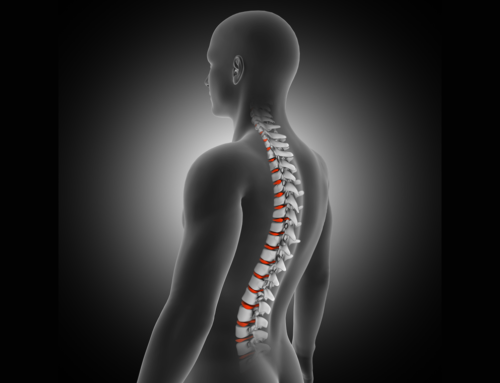In our increasingly digital world, we’ve become inseparable from our devices. Smartphones, tablets, and laptops have transformed the way we work, communicate, and entertain ourselves. However, this digital dependency has given rise to a modern health concern known as “Tech Neck Syndrome.” In this article, we’ll explore what Tech Neck is, its impact on your spine, and expert insights from Dr. Yogesh Pithwa, a leading spine specialist, on how to mitigate its effects.
Understanding Tech Neck Syndrome
What Is Tech Neck?
Expert Insight: Dr. Pithwa defines Tech Neck as a collection of symptoms resulting from the prolonged use of digital devices. It’s characterized by neck pain, stiffness, and potential long-term spine damage.
1. Prolonged Use of Digital Devices
- The Expert’s Perspective: Dr. Pithwa recognizes that the increasing use of digital devices has become an integral part of our daily lives. These devices, including smartphones, tablets, and laptops, often demand long periods of screen time for work, communication, and leisure.
- Impact on Neck and Spine: Prolonged use of these devices necessitates a specific posture—head bent forward and shoulders hunched—which puts excessive strain on the neck and spine.
2. Collection of Symptoms
- The Expert’s Perspective: Dr. Pithwa characterizes Tech Neck Syndrome as a constellation of symptoms that manifest due to this prolonged strain. These symptoms often occur in unison and can vary in severity.
- Key Symptoms: Tech Neck commonly presents with neck pain, stiffness in the cervical region, and discomfort that may radiate into the shoulders and upper back. It’s important to note that these symptoms are not isolated; they collectively indicate Tech Neck’s presence.
3. Potential for Long-Term Spine Damage
- The Expert’s Perspective: Dr. Pithwa underscores the significance of recognizing Tech Neck beyond its immediate discomfort. He highlights the potential for long-term damage to the spine if the condition is left unaddressed.
- Long-Term Consequences: Chronic Tech Neck can lead to more serious spine issues over time. The constant strain on the neck and spine’s supporting structures can result in misalignment of the spine’s natural curvature, ultimately causing conditions like kyphosis and forward head posture.
4. The Importance of Early Awareness
- The Expert’s Perspective: Dr. Pithwa’s insight serves as a call to action for individuals to become aware of the symptoms and risks associated with Tech Neck. Early recognition is key to preventing long-term spine damage.
- Proactive Measures: By recognizing Tech Neck’s early signs and implementing preventive measures, individuals can protect their spine’s health and maintain a better quality of life.
Symptoms: Tech Neck symptoms often include neck pain, shoulder discomfort, headaches, and poor posture. Over time, it can lead to more serious spine issues.
The Impact on Your Spine
1. Poor Posture
- Expert Insight: Dr. Pithwa emphasizes that the most significant contributor to Tech Neck is poor posture while using digital devices. The act of hunching over a smartphone or laptop for extended periods places excessive strain on the neck and spine.
- Long-Term Effects: Chronic poor posture can lead to spinal misalignment, affecting the natural curvature of the spine. This, in turn, can result in conditions such as kyphosis (excessive rounding of the upper back) and forward head posture.
2. Increased Pressure on the Spine
- Expert Insight: Dr. Pithwa explains that the angle at which we hold our devices significantly increases the load on the cervical spine. Tilting the head forward to view a screen can lead to up to 60 pounds of pressure on the neck.
- Consequences: The added pressure can cause strain on the spinal discs, potentially leading to disc compression and increased risk of disc herniation.
Preventing and Managing Tech Neck
1. Ergonomics
- Expert Insight: Dr. Pithwa stresses the importance of ergonomics. Proper positioning of devices and adjusting screen height can significantly reduce strain on the neck and spine.
- Tips: Invest in ergonomic accessories such as laptop stands and adjustable chairs. Keep screens at eye level to minimize head tilting.
2. Take Breaks
- Expert Insight: Dr. Pithwa recommends taking regular breaks during digital device use. Simple stretches and neck exercises can help relieve tension.
- Example: Every 30 minutes, take a break to stretch your neck by gently tilting your head from side to side and forward and backward.
3. Mindful Device Use
- Expert Insight: Dr. Pithwa advises being mindful of your device use. Limit the time spent on digital devices, and avoid extended browsing or texting sessions.
- Example: Set daily screen time limits on your smartphone and use apps that remind you to take breaks.
Conclusion
Tech Neck Syndrome is a growing concern in our tech-driven world. Dr. Yogesh Pithwa‘s expert insights shed light on the impact of prolonged digital device use on our spine and posture. By understanding the risks and implementing preventive measures, such as ergonomic adjustments and regular breaks, you can protect your spine and maintain a healthy posture in the digital age.
Remember, your spinal health is essential for your overall well-being. Take steps today to mitigate the effects of Tech Neck and enjoy a healthier, pain-free tomorrow.





Get Social